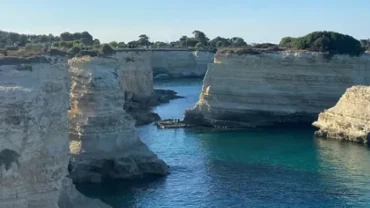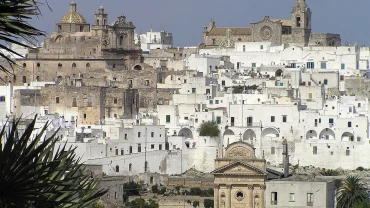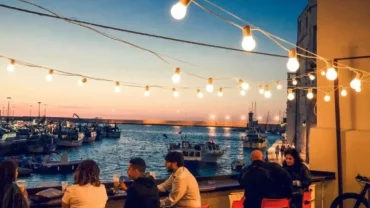From the belvedere of the public gardens, the view opens to the countryside of Cisternino.
From the belvedere of the public gardens, the view opens onto the Cisternino countryside, rich in vineyards, olive groves, fruit trees, masserie farms-the oldest of which date back to the 15th-16th centuries-and trulli, the unique dry-stone buildings with a cone-shaped dome covered with stone slabs. We are in the Itria Valley, a UNESCO World Heritage Site. Cisternino has the largest forest in the Province of Brindisi, about 200 hectares of Mediterranean scrub and pine forest under forest constraint.
Visiting Cisternino is one of the must-do things on your list of things to do in Puglia. That’s why with this article I want to suggest what to see in Cisternino and what to do in one of the most charming villages in the Itria Valley.
Once you enter the historic center you will feel as if you have been catapulted into another world. Narrow alleyways, small squares where you can breathe in the scent of meat cooked in butcher shops, very white houses leaning against each other and stately mansions.
The entire village is made even more enchanting by colorful flowers in the windows, aphorisms stamped here and there on stairways and walls, original decorations, and from 2021 you will also find special swings for the happiness of adults and children alike.
As you walk through this maze of narrow streets, look up to admire the arches that join the old houses. A succession of stairways, lively little squares, and balconies adorned with flowers that contrast the off-white lime walls.
Whichever road you take you sooner or later arrive at Vittorio Emanuele Square where the Clock Tower stands tall. It is the heart of the village, ideal for a coffee break or nice aperitif.
Another among the things to see in Cisternino is the Mother Church of San Nicola, perhaps the most valuable work of art in the village. The Romanesque building has been renovated several times, but inside you can admire a 16th-century baptismal font and the beautiful Madonna and Child carved in stone by Stefano Putignano in 1517.
La Chiesa Madre si affaccia su Piazza Garibaldi dove trovi anche la Villa Comunale e la Torre Grande di epoca normanno-sveva.
Look out from the railings of the square to get a nice view of the Itria Valley and masserias and trulli sprouting here and there among the olive groves with a cappuccino and typical pasticciotto at Bar Vignola on Via San Quirico, 28
What’s more, since 2021 scattered around the historic center of Cisternino you will find many swings of all types and sizes. Hence the reason for the nickname “The Rocking Village.”
You can stay with your nose in the air reading aphorisms printed on swings hanging in the alleys, or go exploring those installed outside the stores or in the hidden corners of the village. They are all colorful and truly original, impossible not to want to try them all.
For example, there are ones dedicated to Frida Kahlo, Rino Gaetano, and Dante’s Divine Comedy. Between Heaven, Purgatory and Hell it is up to you to choose which swing to sit on.
The children also had a great time. They experienced their visit to Cisternino as one big treasure hunt to unearth the most beautiful swings in the village.
The idea of the municipality of Cisternino came about as a result of the unstable situation we are experiencing in recent years due to the pandemic. This seesaw context of openings and closings should make everyone reflect on the value of moments of serenity and joy.
What better symbol than the swing to depict lightness and carefreeness typical of childhood?






Comment (0)